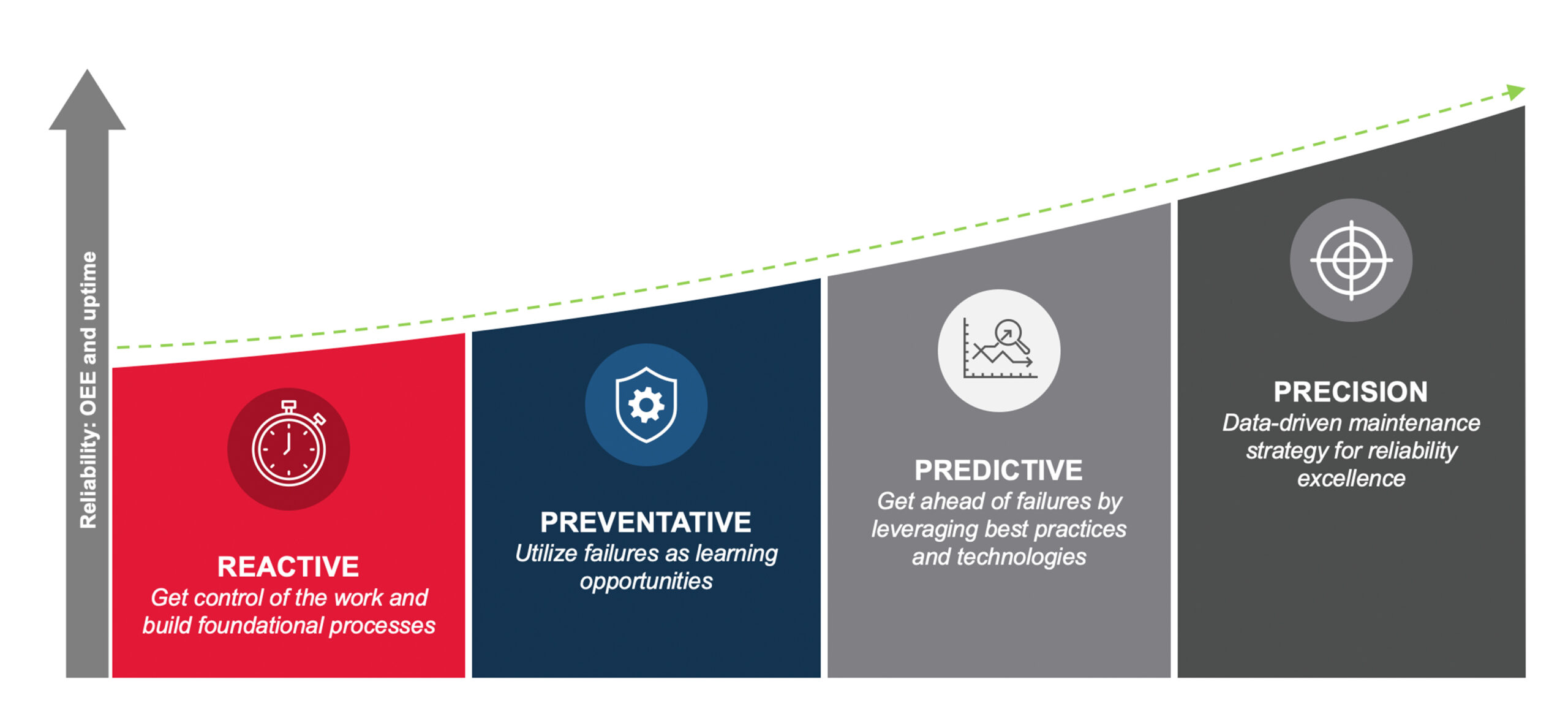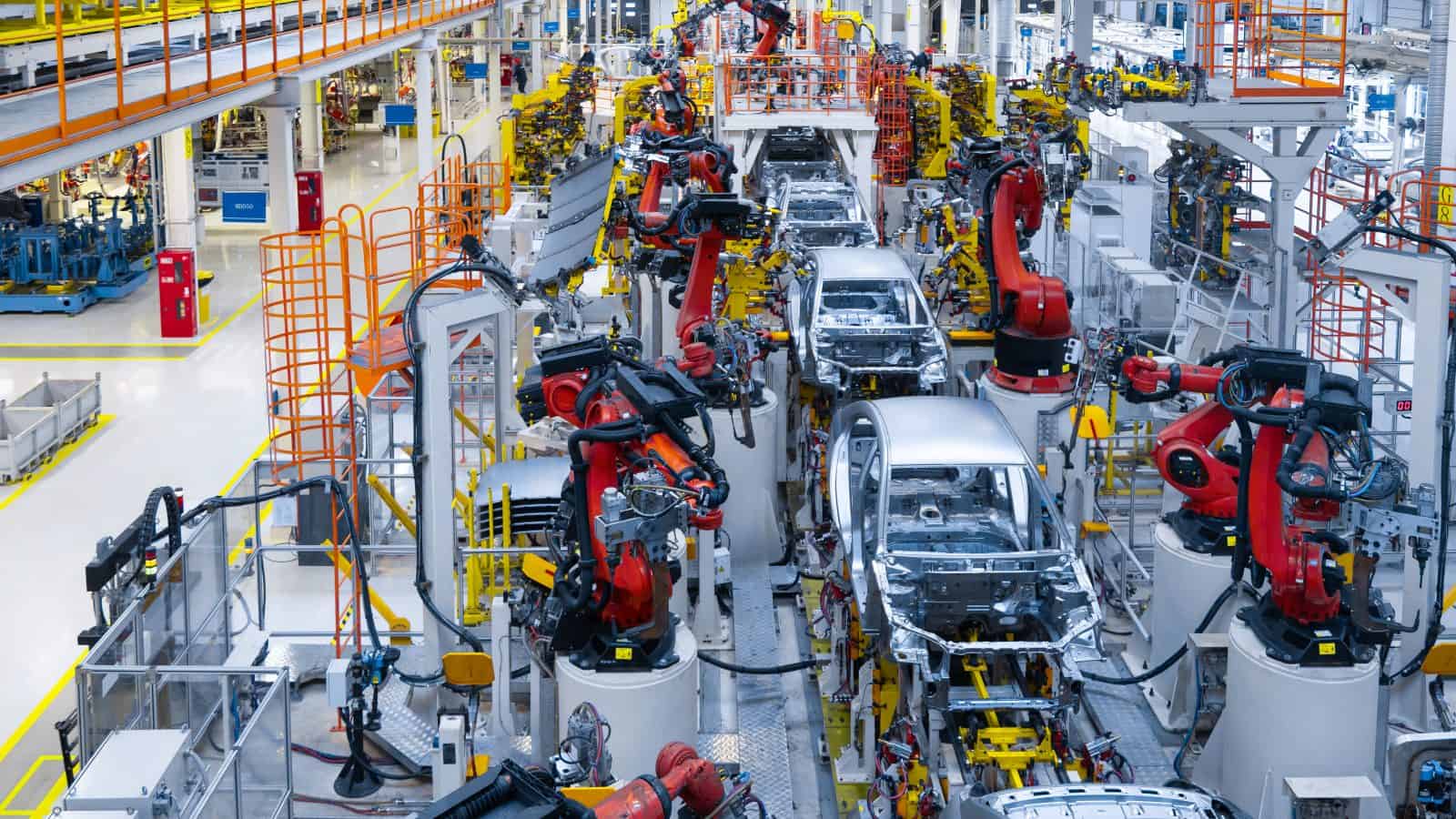Six Key Takeaways: Be ‘Predictive’ to Be ‘Preventive’
A recent MLC Master Class focused on how manufacturers are using condition monitoring and predictive maintenance to avoid downtime, maximize productivity, and enhance operational efficiency. Micah Statler, Director of Industrial Technologies at Advanced Technology Services (ATS) shared his experiences and expertise in an engaging conversation with MLC’s Senior Content Director, Penelope Brown.
Here are six key takeaways from their discussion:
1. Transforming data charts into prescriptive actions
According to Statler, no matter how mature a maintenance organization is, any change is difficult and change management techniques are important because there are outside influences and new tools involved. But transforming data from a squiggly line on a chart into action is paramount.
“The biggest challenge facing any manufacturers out there today is not necessarily the collection of data, but the interpretation of that data to gain a level of insight that allows them to be successful in taking action and recognizing a return,” Statler said.
Figure 1 – maintenance maturity levels

He identified four maturity levels for overall equipment effectiveness (OEE) and uptime reliability: reactive, preventative, predictive, and precision. To find where an organization falls on this maintenance maturity scale, Statler provided a few assessment questions:
- Are you planning your work?
- Are you able to put a plan forward and able to execute that without a lot of schedule breakers?
- Are you able hit your production targets?
2. Eating the condition monitoring elephant one bite at a time
For companies looking to implement best practices for condition monitoring, don’t try to boil the ocean. Instead look to where you’re seeing the most impactful downtime and eat the elephant one bite at a time. Some areas to look at first include where you are spending the most on MRO parts and repairs, what problems cause your most expensive maintenance labor, and what assets experience issues regularly.
Statler also recommended avoiding a single firefighter to look at these issues.
“We have an opportunity to do it in a much more efficient way, and also in a way that doesn’t mean it is an individual contributor, and therefore your progress – if you’re not dependent on an individual – can’t backslide from it. It’s more ingrained in your culture and it just becomes how you do business,” he said.
3. Combatting alert fatigue with collaboration
“Cross-functional teams are critical. It’s not just about the data collection,” Statler said. “We have to do something with that data, and we have to really align on what the ultimate outcome is.”
Further, to avoid what Statler called “alert fatigue,” there must be trust and the right level of communication between the factory floor and those asking them to take an action from the data. Change management comes into play here, and the collaborative team – including data scientists, developers, technology departments and the maintenance team – needs to be realistic about how mature a company’s maintenance program is.
4. The beautiful circle: AI and data analytics
Analytics and statistical process control has been around for a long time, but newer technologies like artificial intelligence (AI) help manufacturers see broader trends and take findings from one measure to another.
To illustrate this, Statler mentioned the core four traditional predictive maintenance analysis: oil, vibration, ultrasonic, and thermographic.
“What we’re able to do with the tools that we have today is, say there’s something else that I want to measure, we can apply a lot of the same models to that,” he said. “We’re getting a lot better at being able to not only say there’s a problem, there’s a change in that trend, but being able to predict what is the remaining useful life of that component that’s being monitored.”
“Ultimately,” he said, “we don’t want to get to a position where, when we notice a change in trend, we make a component change. We want to be at a point where we’re able to make minor but precision adjustments to anything that’s being measured.”
This is where AI and advanced analytics come into play.
“The better we can deliver the service, the better we can train the model, the better we can deliver the service. It’s a beautiful circle,” Statler concluded.
5. Avoiding “service on a stick” partners
For those looking to partner with a technology provider to achieve better predictive maintenance, it’s as important to look at what a company does now as it is to look at the company’s vision for the future.
“You want to pick a partner that is going to grow long-term with you and be able to work within the platforms and the tools and the data sets that you have today and in the future,” said Statler.
He also recommended looking at the service offering, itself: is it an end-to-end solution that not only collects the data and monitors the equipment but also helps you interpret the data in real time?
Statler cautioned against providers who offer one-size-fits-all solutions, and likened them to getting a plain corn dog at the fair.
“There are an infinite number of options out there for you to buy hardware, tons of platforms available, and a lot of them have coupled those together,” he said. “Internally, we call that ‘service on a stick.’”
6. A fully digital future for condition monitoring and predictive maintenance
Condition monitoring and predictive maintenance are primed for a future full of innovation.
“The technology will be accelerating so quickly and be so ingrained that we’re not even going to notice that the industry has transformed. It will be fully digital,” he said.
In fact, he pointed to technologies that we’re already seeing today. In particular, smart hands or augmented reality tools will transform the business, and people will view dashboards through heads-up displays in proximity of specific assets.
Beyond the technology itself, Statler expects to see a shift in the technical capabilities of on-site staff as well.
“There’s going to be a real integration of vendors with technology vendors and equipment vendors being able to, real-time, see what maintenance technicians see – and that’s where the smart hands come into play,” Statler said.
MLC members may access the full recording under Master Class in the Resource Center of the Member Dashboard.
More information about the Master Class Series is available online.
